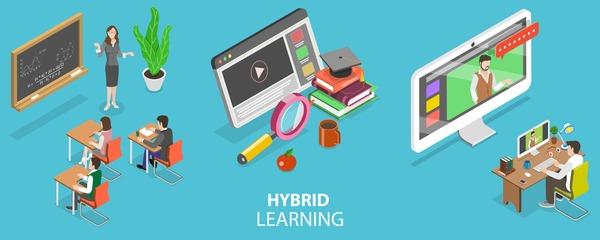Blended Learning: How Combining Traditional and Digital Education Revolutionizes Classroom Success
In today’s fast-evolving educational landscape,one teaching approach stands out for its versatility and proven effectiveness: blended learning. by synergizing traditional classroom methods with digital learning tools, blended learning is reshaping how educators teach and how students learn—ushering in a new era of classroom success.
What Is Blended Learning?
blended learning is an innovative educational strategy that merges face-to-face teaching with online components. This instructional model offers students multiple pathways to access curriculum content, combining the strengths of both traditional education and e-learning.from primary schools to universities, blended learning is rapidly becoming the standard for progressive classroom environments.
- In-person instruction: Teacher-led, interactive lessons, group projects, and hands-on activities in the classroom.
- Digital learning: Online courses, educational apps, multimedia content, and virtual discussions accessible anytime, anywhere.
Core Components of Blended Learning
- Face-to-face collaboration and mentoring
- Self-paced online modules
- Interactive multimedia resources
- Digital assessments and feedback
Key Benefits of Blended Learning
Blended learning delivers a wide range of advantages for both educators and students.By incorporating various teaching methods, it fosters more personalized, engaging, and effective learning experiences.
1. Enhanced Student Engagement
- Interactive digital tools make lessons more interesting and dynamic.
- Gamified learning increases motivation and participation.
- Multimedia content caters to different learning styles.
2. Flexible Learning Opportunities
- Students can access materials anywhere, anytime, at their own pace.
- Accommodates diverse schedules and learning needs.
- Reduces geographical barriers and supports remote education.
3. Improved Academic Achievement
- Combines the personal touch of traditional teaching with the efficiency of technology.
- Provides instant feedback and targeted interventions.
- Supports differentiated instruction for varied abilities.
4. Teacher Empowerment
- Educators can track progress with analytics from digital platforms.
- Saves time and effort with automated grading and resources.
- Facilitates collaboration among peers and professional progress.
Practical Tips for Implementing Blended Learning
Introducing blended learning to your classroom doesn’t have to be daunting! The following best practices will help you maximize its impact and ensure a smooth transition.
Start Small and Scale Up
- Begin with a single unit or lesson integrating digital platforms.
- Gather feedback from students early and refine your approach.
Choose the Right Technology
- Select platforms that are user-amiable, secure, and aligned with your learning goals.
- Popular options include Google Classroom, Microsoft Teams for Education, and moodle.
Encourage Collaboration and Communication
- Blend classroom discussions with online forums and group chats.
- Use breakout groups or virtual classrooms for teamwork on projects.
Provide Support and Training
- Offer introductory workshops for students and staff.
- Share online tutorials and support documentation for key tools.
Monitor Progress and Adapt
- Use analytics to track student engagement and achievement.
- Regularly survey students for feedback and adjust methods as needed.
Blended Learning in practise: Case Studies
Case Study 1: High School Science Goes Hybrid
Lincoln High School introduced blended learning in its biology courses by pairing lab work with virtual experiments and video lectures. Within a semester, teachers noticed:
- Increased mastery of core concepts
- Higher test scores and reduced absenteeism
- Students developing skills in autonomous research and digital literacy
Case Study 2: Elementary Math Success Story
Maple Elementary launched a pilot program blending traditional math lessons with interactive online games and exercises. Outcomes included:
- Enhanced problem-solving abilities
- Greater enthusiasm for learning math
- Parental involvement through online progress reports
Case Study 3: University-Level Blended Learning
At Horizon University, business professors designed courses with a mix of lectures, webinars, and simulation-based assignments. Key results were:
- Increased participation and diversity of student voices
- Streamlined grading with automated assessment tools
- Higher retention rates among online student populations
First-Hand Experiences: voices from the Classroom
“Blended learning allowed me to try different activities at my own speed.I loved being able to ask questions online if I didn’t feel comfortable raising my hand in class.” — Jessica, Grade 8 Student
“As a teacher, blended learning has not only saved me time, but I can instantly see which students are struggling and offer extra support. It’s a game-changer for differentiation.” — Mr.Smith, Secondary School Teacher
“our school discovered that combining hands-on projects with digital resources led to more meaningful learning experiences—especially for students who prefer visual content.” — Principal Gomez
Challenges and Solutions in Blended Learning
While blended learning offers powerful benefits, it’s not without its challenges. Understanding these hurdles is key to navigating a successful transformation.
Common Challenges
- Digital divide: Not all students have equal access to technology or reliable internet.
- Initial resistance to change: Teachers and students may prefer familiar methods.
- Quality control: Ensuring digital content meets educational standards.
Practical solutions
- Provide school devices and arrange internet access or hotspots for needy families.
- Invest in ongoing professional development and peer mentoring programs.
- Screen and curate digital resources carefully for accuracy and relevance.
SEO-optimized Takeaways for Educators and Schools
- Adopt blended learning strategies to create dynamic, flexible classrooms that boost academic achievement.
- Use a mix of traditional instruction and digital tools for improved student engagement.
- Monitor, adapt, and refine approaches based on student progress and feedback.
By using keywords like blended learning, digital education, classroom success, online learning tools, and traditional teaching naturally throughout your website or blog, you help both search engines and visitors find valuable, relevant content.
Conclusion: Blended Learning as the Future of education
Blended learning represents a seismic shift in education—from static, one-size-fits-all lessons to vibrant, student-centered learning experiences. By combining the best aspects of traditional teaching and digital education, educators ignite curiosity and encourage lifelong learning. Whether in primary schools, secondary classrooms, or universities, adopting blended learning is a proven way to revolutionize classroom success, foster equity, and empower every learner for the challenges of tomorrow.

